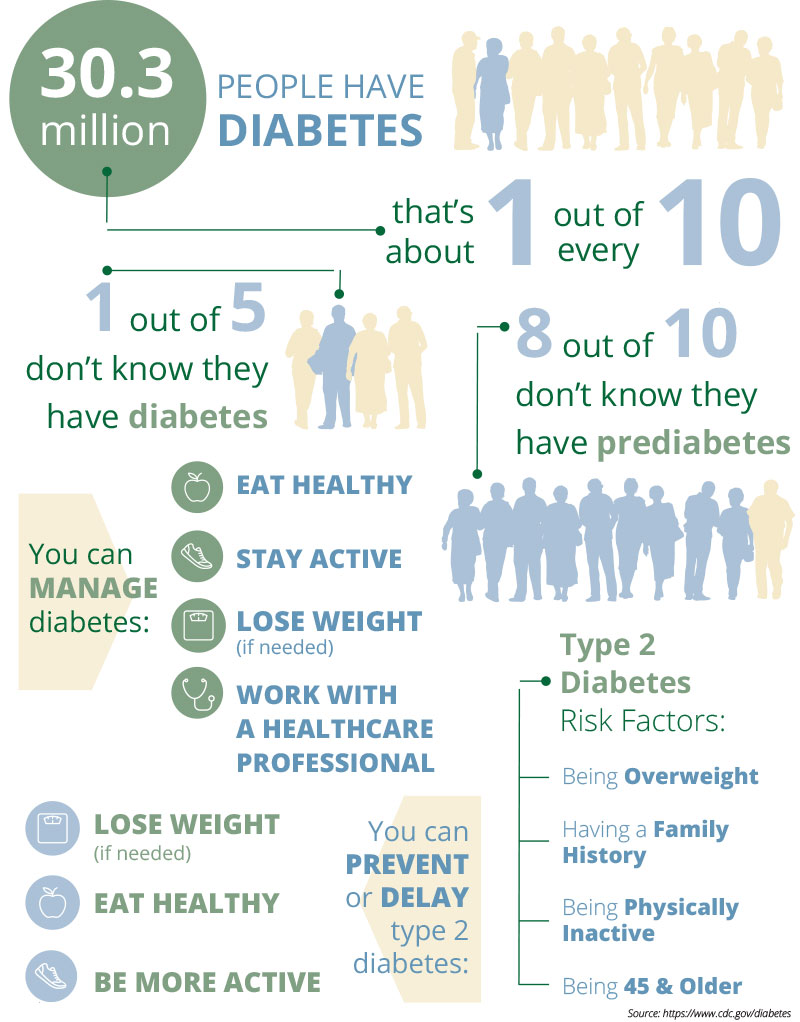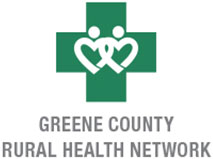Losing weight is often the single best step you can take to control diabetes and pre-diabetes. Learn about our Biggest Loser contest – Registration opens Dec. 1
Exactly What Is Diabetes?
There are two main types of diabetes. Type 1, which is not preventable, most often appears during childhood and adolescence. People with Type 1 diabetes must take insulin every day to survive.
Type 2 diabetes, which is linked to obesity and physical inactivity, accounts for 90%-95% of diabetes cases. Type 2 diabetes can be controlled with medications and lifestyle changes, including losing 5%-7% of a person’s weight, eating healthy foods, and being physically active.
How Many People in Greene County Have Diabetes?
About 5,000 people have diabetes and that number is about double what is was in the mid-1990s. An alarming trend is the increased number of children and adolescents, especially from minority populations, who have been diagnosed with diabetes.
Is It True that Many People Don’t Know They Have Diabetes?
Nearly 20% of people who have diabetes have not been diagnosed – as many as 1,000 people in Greene County – because their symptoms may be overlooked or misunderstood; therefore, they are not receiving the recommended medical care that has been proven to prevent diabetes complications.

What Are the Risk Factors?
Because symptoms can be hard to spot, it’s important to know the risk factors for Type 2 diabetes and to see your doctor to get your blood sugar tested if you have any of them:
- Overweight or Obese
- Have prediabetes
- Are 45 years or older
- Have a parent, brother, or sister with Type 2 diabetes
- Are physically active less than 3 times a week
- Race/ethnicity (e.g., African-Americans, Hispanic-Americans, Native Americans, Asian-Americans, and Pacific Islanders)
- Have ever had gestational diabetes (diabetes during pregnancy) or given birth to a baby who weighed more than 9 pounds
- Previously identified impaired fasting glucose (IFG) or impaired fasting glycemia (IFG)
- High Blood Pressure
- Low levels of high-density or “good” cholesterol. High levels of low-density or “bad” Cholesterol
- Polycystic ovary syndrome
- History of vascular disease
*Source: combined list from American Diabetes Association & Federal Centers for Disease Control
What Are Some of the Symptoms?
The following symptoms of diabetes are typical. However, some people with Type 2 diabetes have symptoms so mild that they go unnoticed.
- Urinating often
- Feeling very thirsty
- Feeling very hungry – even though you are eating
- Extreme fatigue
- Blurry vision
- Cuts/bruises that are slow to heal
- Weight loss – even though you are eating more (Type 1)
- Tingling, pain, or numbness in the hands/feet (Type 2)
*Source: American Diabetes Association
What Should I Do if I Have the Risk Factors or Symptoms for Diabetes?
Contact your doctor. After discussing the matter with your doctor, s/he may test you for diabetes. Typically, you’ll need to get your blood sugar tested to find out for sure if you have it. Testing is simple, and results are usually available quickly.
Talk to your Greene County Doctor about Getting Tested Today.
What Do I Do if I Have Diabetes?
Unlike many health conditions, diabetes is managed mostly by you, with support from your health care team (including your primary care doctor, foot doctor, dentist, eye doctor, registered dietitian nutritionist, diabetes educator, and pharmacist), family, and other important people in your life. Managing diabetes can be challenging, but everything you do to improve your health is worth it!
You may be able to manage your Type 2 diabetes with healthy eating and being active, or your doctor may prescribe insulin, other injectable medications, or oral diabetes medicines to help control your blood sugar and avoid complications. You’ll still need to eat healthy and be active if you take insulin or other medicines. It’s also important to keep your blood pressure and cholesterol under control and get necessary screening tests.
You’ll need to check your blood sugar regularly. Ask your doctor how often you should check it and what your target blood sugar levels should be. Keeping your blood sugar levels as close to target as possible will help you prevent or delay diabetes-related complications.
What is Prediabetes?
It’s a wake-up call that you’re on the path to diabetes. But it’s not too late to turn things around. If you have it (like 12,000 other people in Greene County), your blood sugar (glucose) level is higher than it should be, but not in the diabetes range. People used to call it “borderline” diabetes.
This sneaky health condition has no symptoms so you may have it and not know it. Some people with prediabetes may have some of the symptoms of diabetes or even problems from diabetes already. You usually find out that you have prediabetes when being tested for diabetes. If you have prediabetes, the American Assciation of Diabetes recommends that you be checked for Type 2 diabetes every one to two years.
Treating it can prevent more serious health problems later on.
What are the Risk Factors for Prediabetes?
You’re at risk for developing prediabetes if you:
- Are overweight
- Are 45 years or older
- Have a parent, brother, or sister with Type 2 diabetes
- Are physically active less than 3 times a week
- Ever had gestational diabetes (diabetes during pregnancy) or given birth to a baby who weighed more than 9 pounds
- Are African American, Hispanic/Latino American, American Indian, or Alaska Native (some Pacific Islanders and Asian Americans are also at higher risk)
*Source: Federal Centers for Disease Control
What Should I Do if I Have the Risk Factors for Prediabetes?
Contact your doctor. After discussing the matter with your doctor, s/he may test you for prediabetes. Typically, you’ll need to get your blood sugar tested to find out for sure if you have it. Testing is simple, and results are usually available quickly.
What Do I Do if I Have Prediabetes?
Your doctor will most likely recommend that you eat healthy foods, exercise, and…
Losing weight is often the single best step you can take to prevent prediabetes from turning into Type 2 diabetes. Learn about our Biggest Loser contest – Registration opens Dec 1.
Much of this content courtesy of the American Diabetes Association and the Federal Centers for Disease Control





